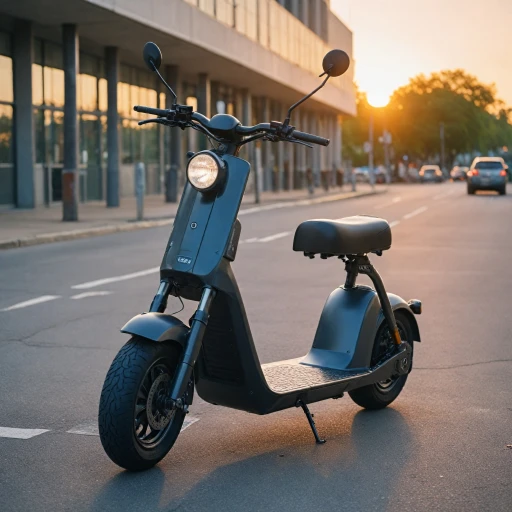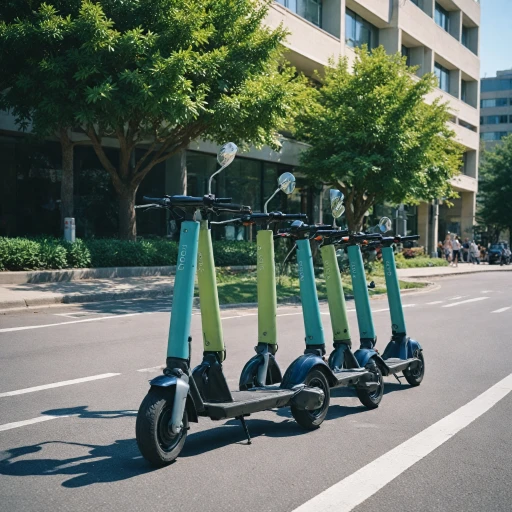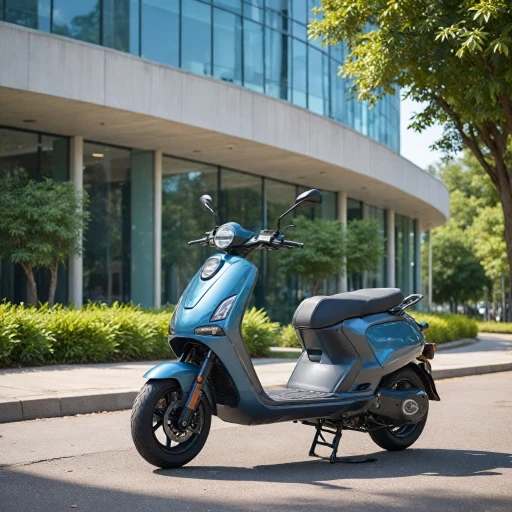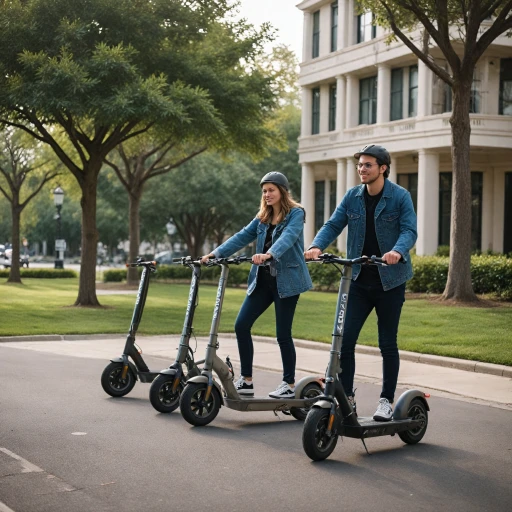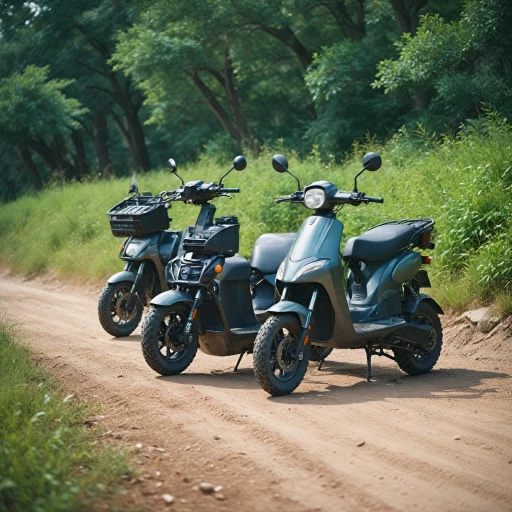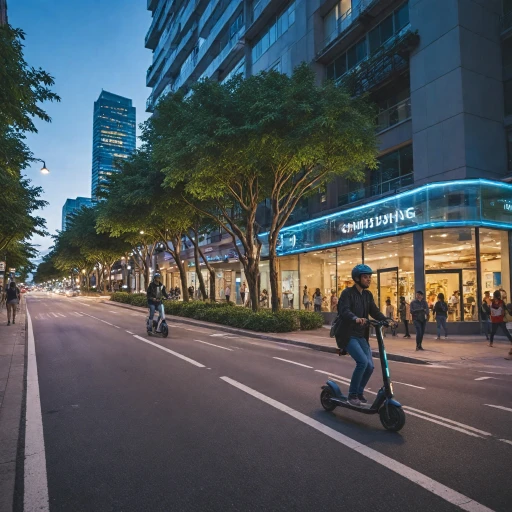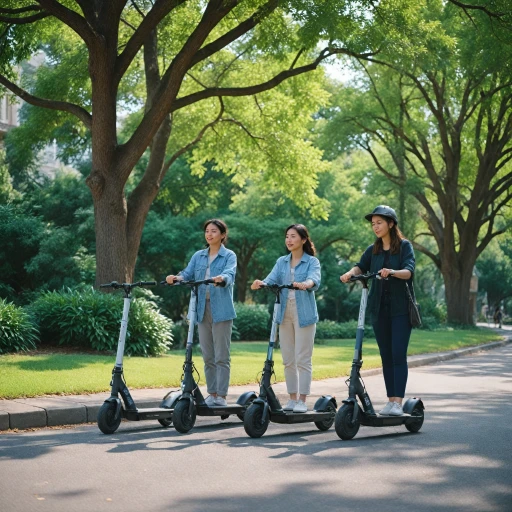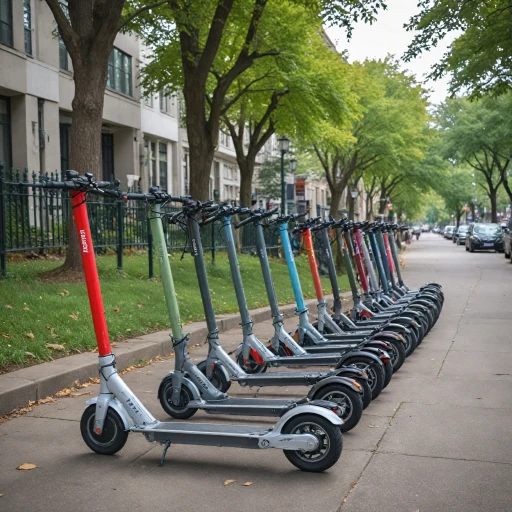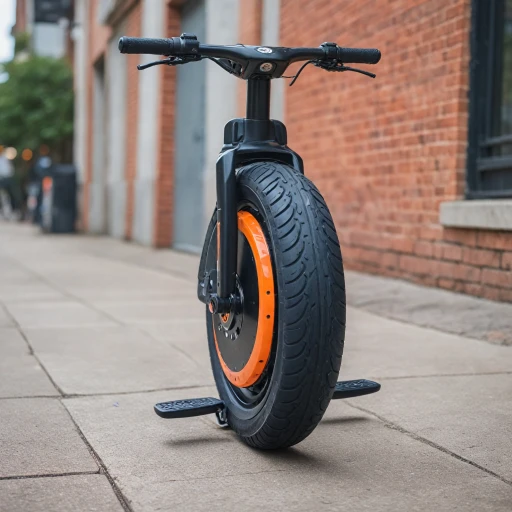
Understanding Portable Electric Scooters
Introduction to Portable Electric Scooters
Portable electric scooters have become an intriguing solution for those seeking convenient, eco-friendly mobility. These devices come with a variety of features that cater to a range of needs, whether you are a daily commuter or an occasional rider. The portability, ease of use, and efficiency they offer make them an attractive option.What Makes Them Unique?
Portable electric scooters distinguish themselves from traditional scooters or other mobility aids by their lightweight design, often equipped with folding mechanisms. The folding feature allows users to easily carry them in public transport or store them without occupying much space, aiding those who travel frequently. Coupled with a compact build, they often weigh less than 50 lbs, contributing to their super portable nature that travelers and city dwellers value.Understanding the Key Features
When selecting a portable scooter, several specifications come into play:- Weight capacity: Most models support riders up to a certain weight, generally catering from 220 to 300 lbs.
- Maximum speed: The average range is around 15-20 mph, depending on the model, giving a decent speed without sacrificing safety.
- Battery life and range: An important factor that determines how far a scooter can travel before requiring a recharge; typically, these devices have a range of about 15-20 miles per charge.
- Folding ability: The ease of folding and unfolding contributes significantly to their portability and convenience factor.
Assessing Cost and Value
The price of portable electric scooters varies widely based on their features, brand reputation, and technological advancements. It's crucial to compare product specifications with current price offerings to ensure you're receiving the best value. While some models might have a higher original price, the convenience and time savings they offer often justify the investment. For further insights, exploring the benefits of lightweight electric scooters can better inform your decision-making process when selecting the right model.Benefits of Portable Electric Scooters
Exploring the Advantages of Lightweight Scooters
Portable electric scooters are revolutionizing the way individuals navigate urban spaces. These agile devices offer a myriad of benefits for those seeking efficient, eco-friendly transportation solutions. One of the primary appeals of electric scooters is their lightweight and folding design. This portability makes them ideal for busy commuters who need a convenient way to travel between destinations. Unlike traditional mobility aids, folding scooters can be easily stored in tight spaces, making them perfect for small apartments or office settings. Range and Battery Considerations Modern portable scooters are equipped with powerful batteries that enable impressive travel distances. While the range in miles may vary, many models allow users to cover significant ground on a single charge. An improvement in battery technology ensures that scooters can efficiently handle everyday commutes without frequent recharges. Moreover, the lightweight nature of these scooters makes them a favorite for travelers who need efficient mobility solutions. Their weight, often under 30 lbs, allows for ease of transport and ensures they're an excellent choice for anyone concerned about airline regulations or overall weight capacity during travel. Cost-Effective Mobility From a financial perspective, electric scooters offer significant savings compared to conventional transport methods. With varying price points, consumers can choose models that fit their budget, from more affordable options to high-end offerings with advanced features. Many users find that scooters save money over time by reducing reliance on public transportation or ride-sharing services. For those interested in understanding more about the economical and practical benefits of lightweight electric scooters, you can explore more on their advantages. This deeper insight can help potential buyers make informed decisions when selecting their scooter of choice. In short, the rise of portable electric scooters represents a shift towards more sustainable and flexible personal transportation. As technology progresses, it's exciting to see how these portable mobility solutions continue to evolve to meet diverse needs, from city commuting to leisure travel.Challenges Faced by Portable Electric Scooters
Challenges Encountered by the Urban Glide
Navigating the urban jungle with a portable electric scooter can be thrilling yet demanding. While the folding and lightweight design of many models offer a solution to mobility challenges, certain hurdles persist. One primary concern is the battery range. Many scooters are designed with compact, portable features which might result in a limited range, often between 10-20 miles per charge. This means users may need to regularly plan for charging opportunities during their travel. Weight capacity is another issue. Most portable scooters, especially those that fold, have a lower weight capacity than their larger counterparts. Typically supporting around 220 lbs, it requires users to carefully compare product specifications against their needs. Another challenge is the potential discrepancy between the promised max speed and the real-world performance. Some scooters might advertise a speed of up to 15 mph, but conditions such as terrain and rider weight can lead to variations. Price also plays a critical role. The current price of these eco-friendly travel solutions varies significantly, especially when considering advanced features like airline approved batteries or additional wheel stability. It's essential to compare view options to ensure a balance between price and performance. Regulatory limitations also pose a hurdle. Different regions have specific regulations concerning where and how scooters can be ridden, affecting their usability. Safety standards must be a priority, guiding users to adhere to speed limits and helmet requirements. For more detailed insights into the high-speed electric scooters, these challenges continue to shape user experiences. As technology progresses and awareness grows, overcoming these challenges could lead to even more innovative advancements in the portable scooter arena.Technological Innovations in Portable Scooters
Innovations in Electric Scooter Technology
In recent years, the electric scooter market has witnessed impressive technological advancements aimed at enhancing the mobility and convenience of these gadgets. As consumers look to compare various options, manufacturers are concentrating on features such as improved folding mechanisms, enhanced battery capacities, and innovative designs that prioritize portability.
One of the key innovations in this space is the development of more efficient batteries. Many modern portable scooters boast larger battery capacities while maintaining a lightweight design. This ensures not only a longer range but also faster charging times, allowing users to travel greater distances with ease. The range of these scooters varies, with some models offering up to 40 miles on a single charge, which can be a standout feature when prospective buyers compare products.
Another area of technological development is the enhancement of folding systems. New foldable mobility solutions have been created to achieve a super portable form factor within seconds, making them perfect for urban commuters who value convenience. Lightweight materials are increasingly used to trim the overall weight, thus promoting easy carrying without sacrificing durability. The emphasis on weight capacity ensures that these folding scooters can accommodate diverse user needs comfortably.
Moreover, the integration of smart technologies in mobility scooters is gaining traction. Features like app connectivity offer the ability to monitor battery life, adjust speed settings, and even locate your scooter if it goes missing. Some models include a 'smart lock' function, adding an additional layer of security that travelers will appreciate, especially when navigating crowded areas.
These advancements are not just limited to functionality. The aesthetic design of portable mobility scooters has also been revamped to appeal to the modern consumer. Sleek lines, custom colors, and unique lighting accents ensure that the scooter doesn’t just perform well but also adds a touch of style to one's daily travel routine.
Overall, the continuous investment in R&D by manufacturers is resulting in products that are not only more efficient but also refined in terms of user experience. As the market evolves, potential scooter users can look forward to even more exciting developments on the horizon.
Regulations and Safety Standards
Legislative and Safety Considerations for Portable Scooters
The increasing use of portable electric scooters, or "mobility scooters," introduces new considerations for regulation and safety standards. With their growing popularity among commuters and travelers, ensuring safe usage and development is vital. Countries and regions implement different regulations due to varying infrastructure and societal norms. Understanding these policies helps users compare and adapt to safety expectations wherever they take their scooters. Regulations often address key aspects:- Scooter Specifications: Maximum speed (e.g., max speed of 15 mph), weight capacity, and battery range are common considerations. These ensure that scooters are safe for users and others around them. In some areas, specific “lightweight” designs might be encouraged to improve portability.
- Usage Areas: Legislation may restrict scooters to certain areas like bike lanes, sidewalks, or specified urban zones. Compliance helps reduce accidents and enhances overall public safety.
- Folding and Portability: Regulations might touch on the scooter's "folding" mechanisms, ensuring they are robust and smooth, a priority given their "foldable mobility" nature which many users find crucial for "travel" needs.
Future Trends in Portable Electric Scooters
Promising Developments in Portable Electric Scooters
The future of portable electric scooters is abundant with potential and innovations that will redefine the landscape of personal mobility. As technology evolves, we can anticipate several key trends that will further enhance the functionality and appeal of these lightweight devices.- Enhanced Battery Technology: Battery advancements are a significant focus area, with improvements in battery life, charging speed, and sustainability. Enhanced batteries are expected to offer greater range miles, accommodating longer travel distances on a single charge, while also reducing the overall weight of scooters.
- Increased Weight Capacity: Future designs will likely focus on optimizing the weight capacity without compromising the portability or folding capabilities. Improvements are anticipated in both the chassis and wheel mobility systems, enabling scooters to comfortably support a wider range of user needs.
- Smart Features Integration: As urban mobility solutions become more digitally connected, smart features such as GPS tracking, app integration for tracking speed mph, and remote lock/unlock functionalities are expected to become standard across models. These features will enhance user experience and safety.
- Regulatory Advancements: With the growing popularity and usage of travel scooters, regulators are likely to refine and update guidelines to ensure safety and uniformity in urban travel. This may include stipulations on max speed or acceptable weight classifications for airline travel, ensuring scooters meet a standard safety and convenience threshold.
- Improved Affordability: As the technology becomes more mainstream, we can foresee a reduction in original price points. This price current decrease will make scooters more accessible to a broader audience, further promoting the use of eco-friendly mobility solutions.

